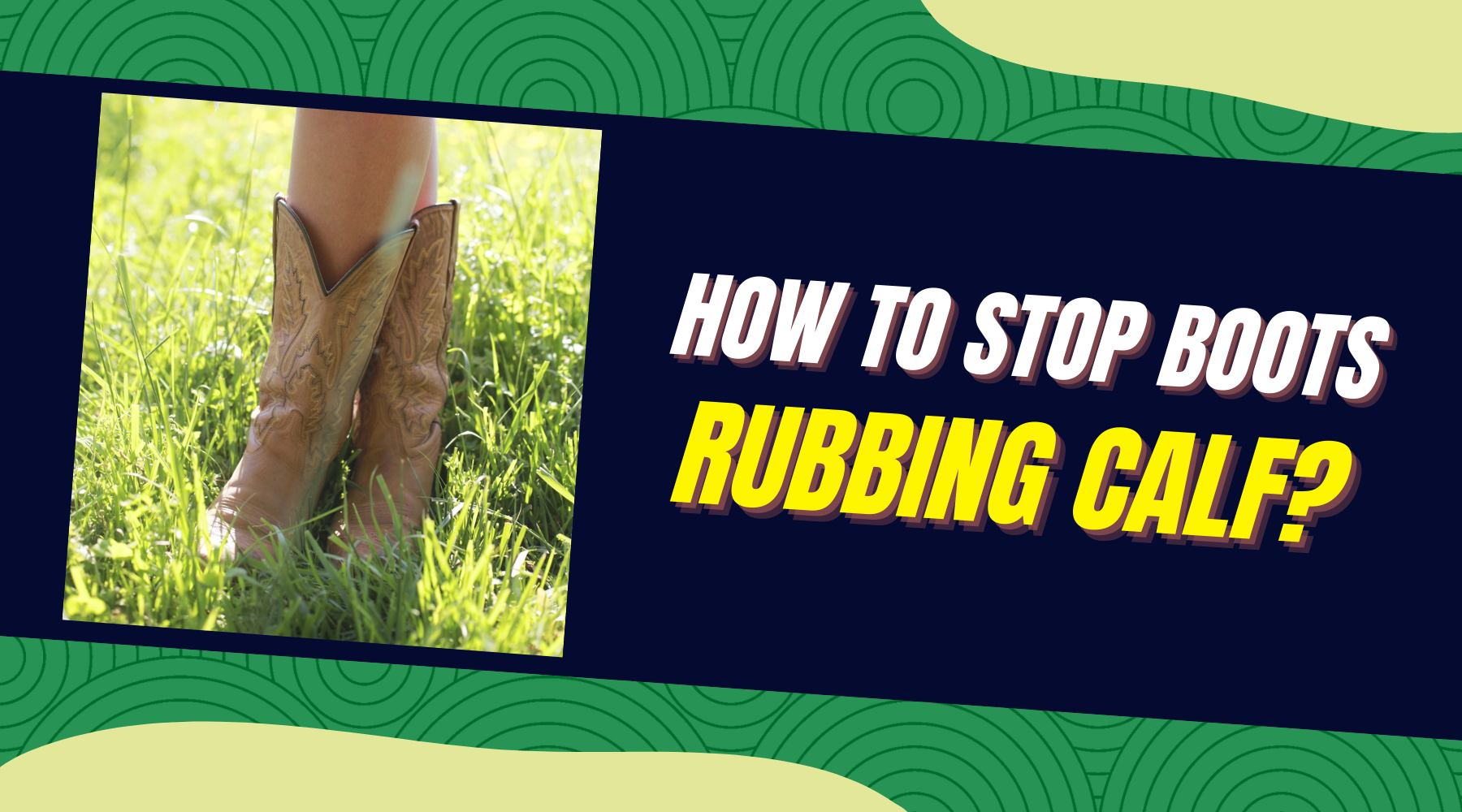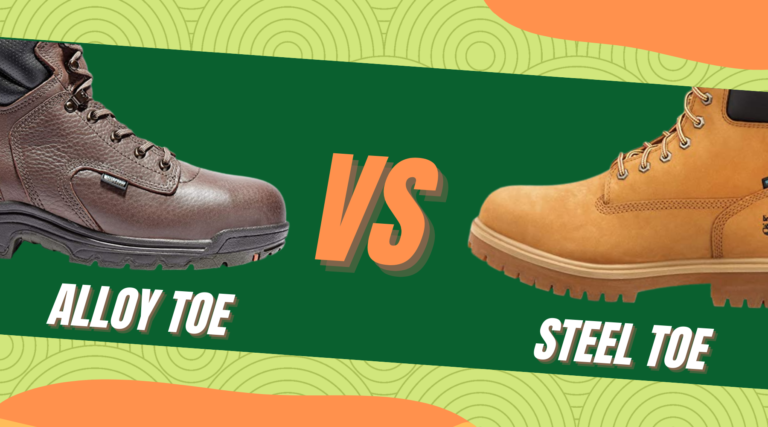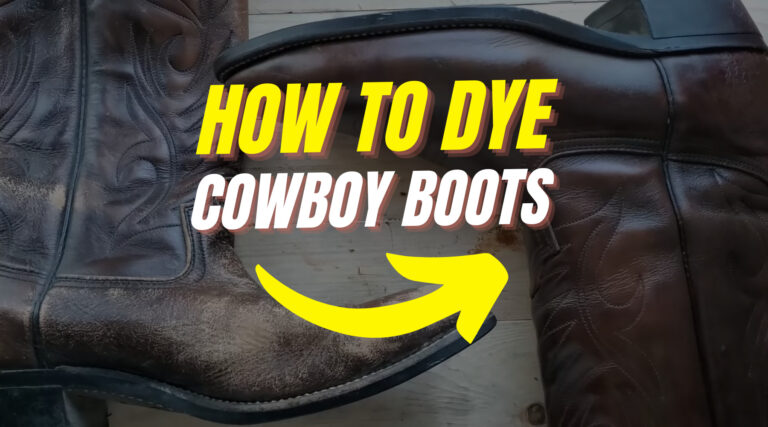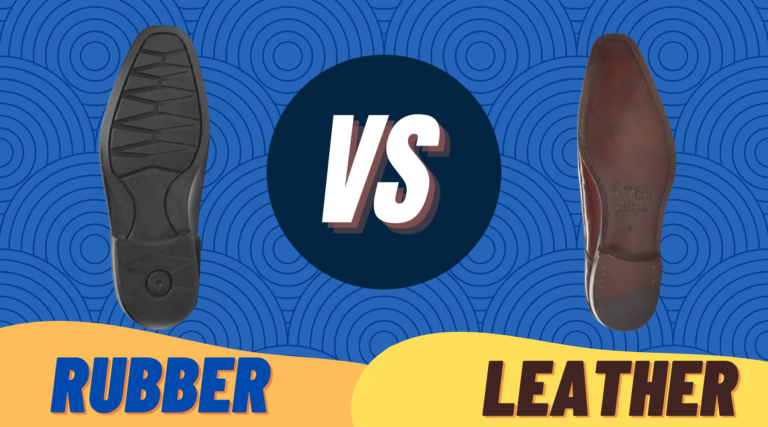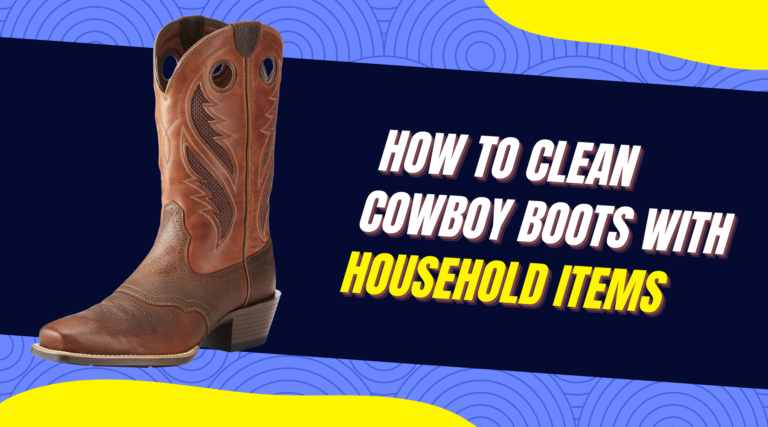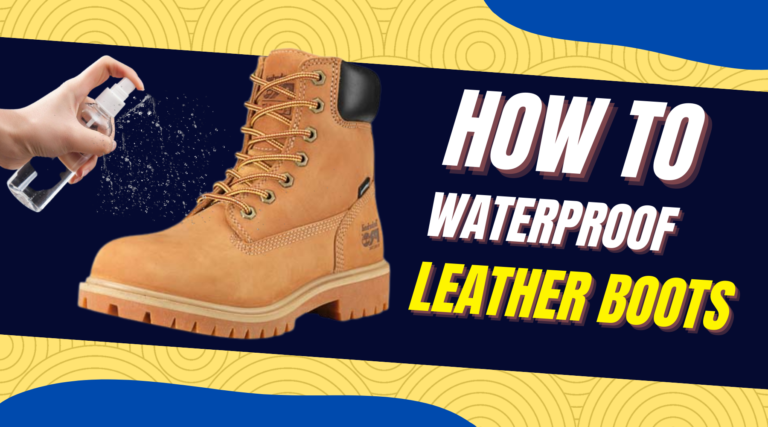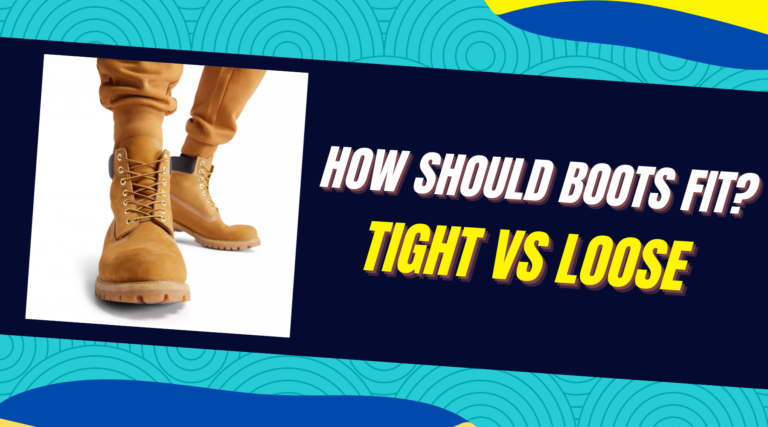How To Stop Boots Rubbing Calf? [7 Easy Ways]
If you’re wearing boots, like most people are during colder months, then you are sure to have a problem, chafing. Most of the time it is either cowboy boots rubbing calf or work boots rubbing shins but not just these, but many other types of boots also rub against calves. Due to friction, it chafes your skin and causes blisters. This article will discuss the causes behind chafing, how to prevent it, and how to heal chafing. So that you know how to keep your feet safe and healthy, you can go out into the world with no fear.
Table of Contents
Why Do Boots Rub Calf?
The cause of the discomfort that boot-wearing individuals experience is mainly because of the wrong shoe size. When the shoes are too loose, they wiggle around calves and chafe your skin. The boots can also rub calves when they are too tight, causing a lot of friction between your calves and the shoes.
Another reason boots chafe the calves is that it is made up of leather, leather is a hard material, and it is inflexible, and wearing leather boots for extended periods of time can cause chafing. Also, shoes made from synthetic fabric are coarse and cause friction which can also give rise to rubbing.
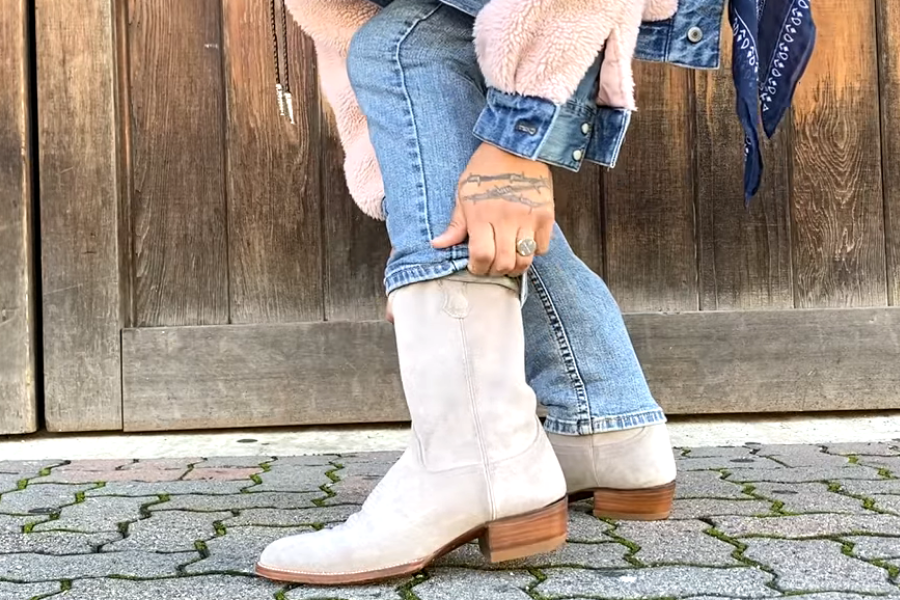
Some shoes have seamless stitching and lining, while others have exposed stitching and linings. These exposed linings can rub against your calves and irritate your calves.
Related: How To Clean Cowboy Boots Easily?
Water is one of the leading causes of chafing, and whenever you wear boots when you are wet or when the shoes themselves are wet, it will cause the problem. That is because moisture creates slippery conditions in the boots, which increases the chances of rashes.
Sometimes the reason behind that is not the boot but the socks, some synthetic fabric socks, though look stylish but are not comfortable since they are made up of synthetic material and are coarse, and when they rub with the skin, they cause issues.
Lastly, high-heeled boots are also the reason for chafing as they do not always allow a proper posture when you wear them, and the boot further leads to the wrong posture of your feet and calves. The improper posture causes the boot to rub against the calves, which induces chafing.
How To Keep Boots From Rubbing?
We all know that one of the most common complaints with boots is that pesky rub on the calves that just won’t go away no matter what you do! Well, have no fear because here are some top tips for preventing this problem! You’ll never have to suffer from boot chafing again!
- Don’t wear excess socks. Sometimes people wear bulkier socks in winter just to keep their calves warm from cold air. It isn’t necessary as thicker socks make your shoes tight and cause friction between your calves and the boots. Simply wear regular socks such as merino wool socks or any socks that have great cushioning so that it protects your calves from cold and chafing. And then make sure you pull them all the way up. Pulling your socks up will prevent rubbing between your calves and the boots.
- You can also buy boot cuffs. Boot cuffs are sleeves that are made up of yarn, they cover the calves. The purpose of the boot cuffs is to make it look like you are wearing a bulky sock but without any bulk. Boot cuffs also prevent your boots from rubbing the calves. Hence protecting your calves from chaffing.
- Make sure your boots are the right size! Most boot problems come from wearing too small or too large of a size. It is essential that you have some breathing room in your shoes. It is especially important with regards to calves because if they rub against your shoes too much, it can chafe your skin and make it hard for you to walk. One of the most common ways to test the fit of your boot is the finger test. While wearing the shoe, put a finger between the back of your calf and the boots. If there is space for more than a finger, then the boot is probably too big for you. But if there is no space for a finger or if it is hard to squeeze in the finger, then the boot is too small for you. The finger should snugly fit in between the back of your calf and the boot.
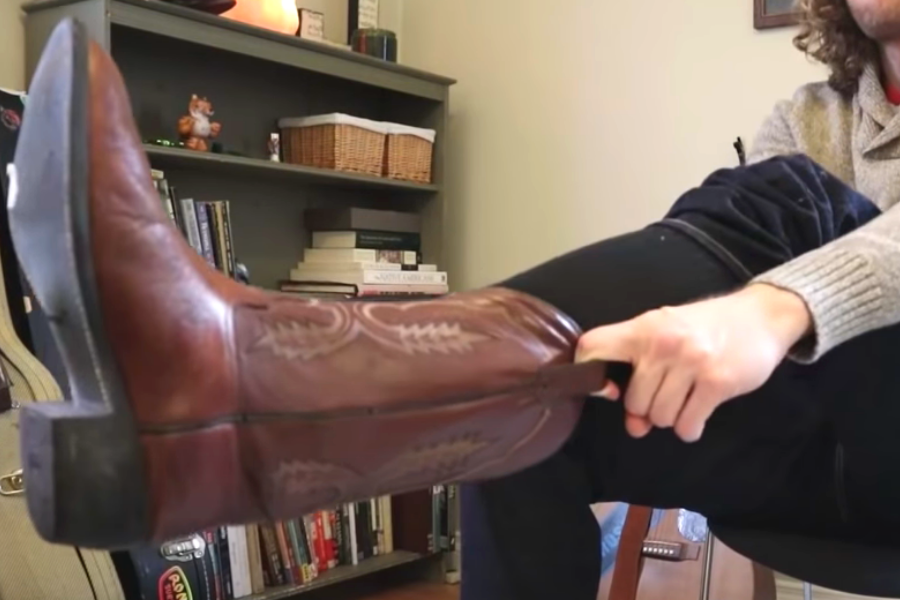
- Use powder/ talc if you get really sweaty! This tip applies to regular shoes, too, actually! Simply using some talc on your calves can really help them not get too sweaty and prevent chafing. There are also astringent powders that work too, but those are more for preventing odor, really.
- Put petroleum jelly on your calves before putting on your boots! This trick is excellent to prevent rubbing & chafing as it will keep your calves moisturized.
- Choose the right kind of leather! Nowadays, boots are made from different types of leather that vary from super soft suede to rough and thicker leather. In this case, the choice you make will come down to personal preference, but you should also include comfort in your preferences, as the rough and thicker leather will have greater friction and can lead to rubbing and chafing.
Read Also: Neatsfoot Oil vs Mink Oil For Leather Boots
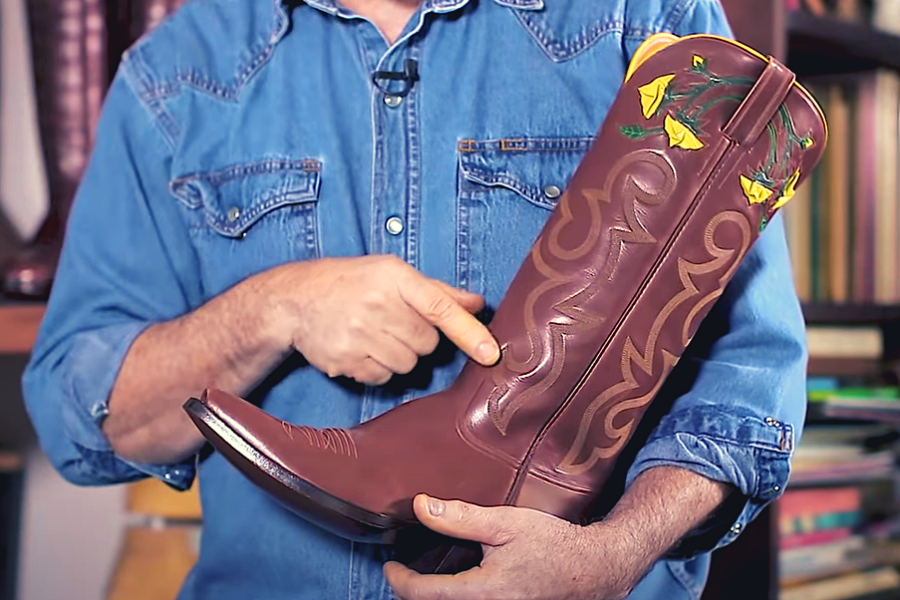
- Take care of your leather! I know this sounds like common sense, but a lot of people don’t realize that the leather on their boots can crack over time. It is why you’ll often see shoes with holes in them. Take extra care to protect your leather by applying some leather conditioner and corn oil to it before storing them in the closet. (You can use shoe trees for this purpose as well.) Because a cracked leather shoe will have greater friction and can be uncomfortable to wear.
Related: How To Mink Oil Leather Boots
How To Heal Chafing?
Skincare can be a daunting and sometimes complicated task. With so many products and ingredients out there, it can be hard to determine what will work best for you and your skin type. Luckily, there are plenty of remedies to heal chafing that doesn’t require any special treatment or medication.
Various home remedies can treat boot chafing rash. First of all, stop the action that led to rubbing. Remove the boots that are rubbing against your calves. Wear more comfortable shoes. If the chaffing is at its beginning stages, then you should wash the chafed area and pat it dry; after that apply some petroleum jelly. The petroleum jelly will keep the skin moisturized and keep the water away from the skin. If the chaffing has led to blisters, then it is best for you to get it checked by a professional. They will prescribe you a topical steroid to help your calves recover. Avoid scalding showers and harsh chemical soaps. Instead, wash the skin with organic soaps and lukewarm water and keep the skin moisturized.
Related: Saddle Soap vs Mink Oil

